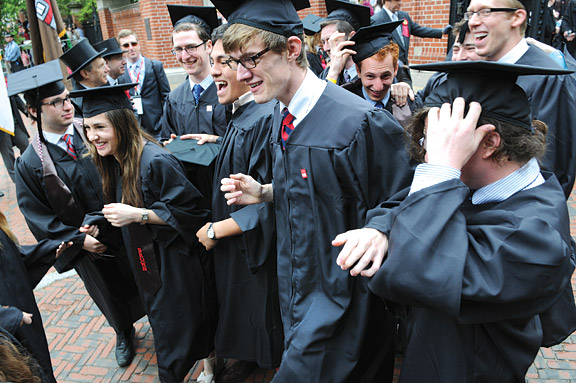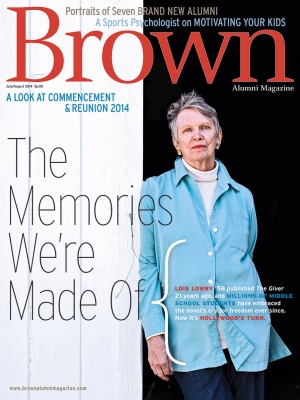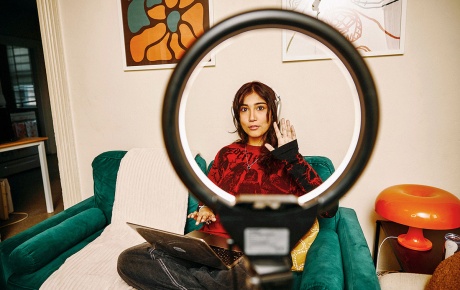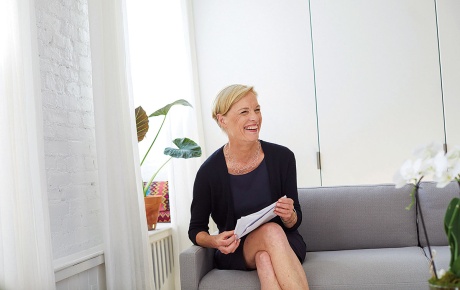This Memorial Day weekend, the University celebrated three things: the awarding of 2,440 degrees to seniors and medical and graduate students; the reunions of more than 3,000 alumni; and the University’s 250th anniversary.

In contrast, the campus overflowed with people on the day before Memorial Day—a holiday meant to remember the men and women killed while protecting the American state the class of 1769 could only imagine. With their cars parked all over Providence’s East Side, alumni and graduates’ families thronged anywhere a foot of space could be found, and they patiently waited their turn to march in the procession or to cheer its progress. Its destination? The First Baptist Church in America, another splendid piece of history that served as a setting for the countless selfies and tweets the occasion produced.
Across the campus, festive red and brown banners reading Imagine Brown: 250+ hung from lampposts, highlighting the anniversary of the 1764 signing of the Brown Charter. Rhode Island Hall hosted an exhibition reimagining Brown’s “Lost Museums,” especially the Jenks Museum of Natural History and Anthropology, which had occupied the building from 1871 to 1915 (see “Ghost Story,” Finally, page 72).
Down in List Art Building, the Bell Gallery drew visitors to a much more current exhibition of work by three prominent contemporary alumni artists: Sarah Morris ’89, Bob Reynolds ’90, and Taryn Simon ’97.
All of this year’s honorary degrees went to alums—one, children’s author Lois Lowry ’58, author of The Giver, finally was able to collect the Brown degree she’d put on hiatus to marry and raise a family more than a half century ago (see page 22). Another, ecologist Nalini Nadkarni ’76, a pioneer in the study of forest canopies and a lifelong devotee of trees, delivered a Baccalaureate address as unconventional and inspiring as Brown’s all-inclusive pan-religious service.
After marveling at how trees are rooted in the earth while reaching
for the sky, Nadkarni directed seniors to “Stand up and turn your cell
phones on!” Then she exhorted them to flash tweet their “sky dreams”
and life goals. The responses ranged from the local (“a safe university
for all future students”) to the global (“helping Libya toward peace
and stability”). And then came the personal: “professional samba
dancer!”
From the vitality of the graduating seniors, it was clear that, after
250 years of evolution, Brown is as ready to look ahead as it is to
ponder the past.





